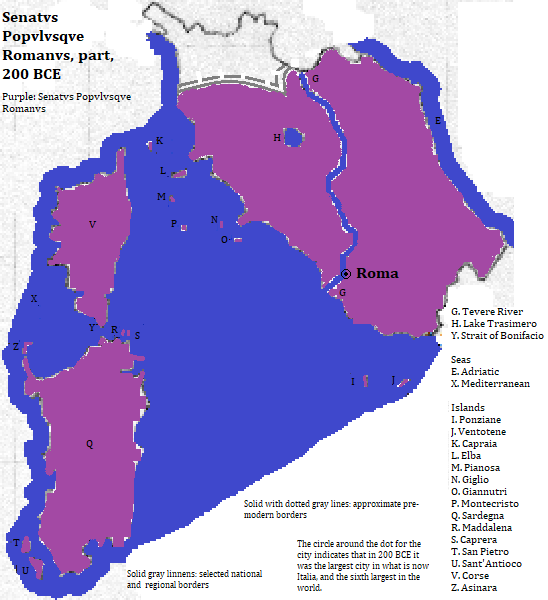
| To Duval Family Home Page | Europe |
| To Chris Home Page | Italia |
| To Earth (Geography Home Page) |
Roma
Today the metropolitan area (informally described) has a population of 4.185 million
Within the Metropolitan City of Roma is the town of Cerveteri (37,000 residents
Also within the metropolitan city are two of the nation's busiest airports:
| Name | Year | Population | Political entity |
| Roma | 200 BCE | 150,000 | Senatvs Popvlvsqve Romanvs (Roman Republic) |
| Roma | 100 CE | 450,000 | Senatvs Popvlvsqve Romanvs (Roman Empire) |
| Roma | 361 CE | 150,000 | Senatvs Popvlvsqve Romanvs (Roman Empire) |
| Roma | 500 CE | 100,000 | Regnvm Italiae (Ostrogothic Kingdom) |
| Roma | 622 CE | 50,000 | Rhomania (Romania or the Byzantine Empire) |
| Roma | 800 CE | 50,000 | Francia (Frankish Empire) |
| Roma | 1000 CE | 35,000 | Regnum Francorum (Holy Roman Empire) |
| Roma | 1200 CE | 35,000 | Patrimonium Sancti Petri (Papal States) |
| Roma | 1300 CE | 30,000 | Patrimonium Sancti Petri (Papal States) |
| Roma | 1400 CE | 33,000 | Patrimonium Sancti Petri (Papal States) |
| Roma | 1500 CE | 38,000 | Patrimonium Sancti Petri (Papal States) |
| Roma | 1600 CE | 102,000 | Patrimonium Sancti Petri (Papal States) |
| Roma | 1700 CE | 138,000 | Patrimonium Sancti Petri (Papal States) |
| Roma | 1800 CE | 142,000 | client state of the République de France (France) |
| Roma | 1900 CE | 438,000 | Regno d'Italia (Kingdom of Italy) |
| Roma | 2012 CE | 4,185,000 | Repubblica Italiana (Italy) |



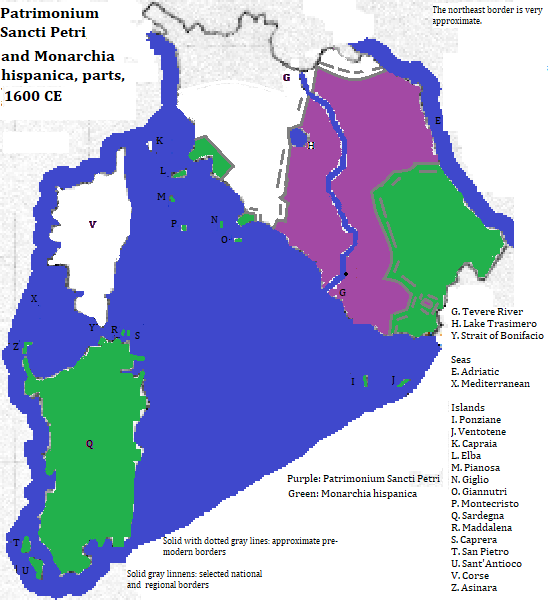
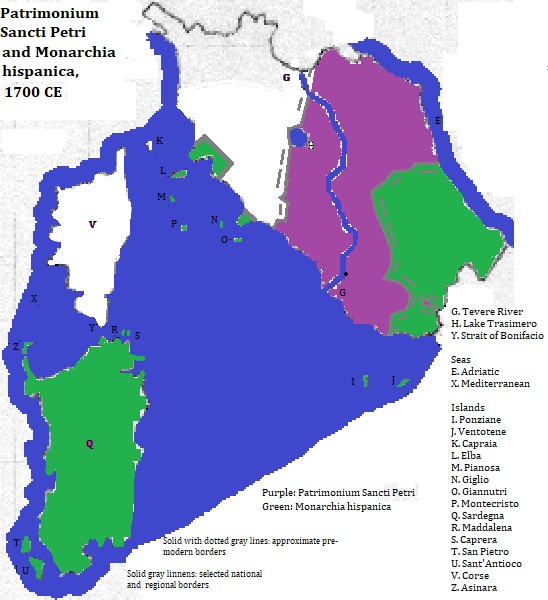
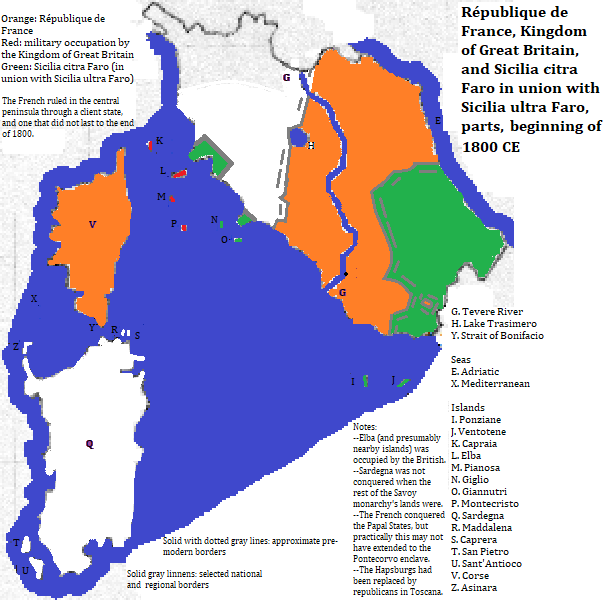
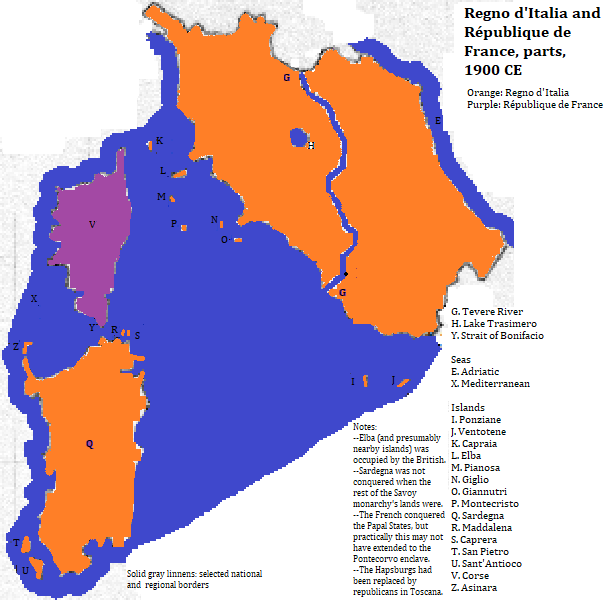
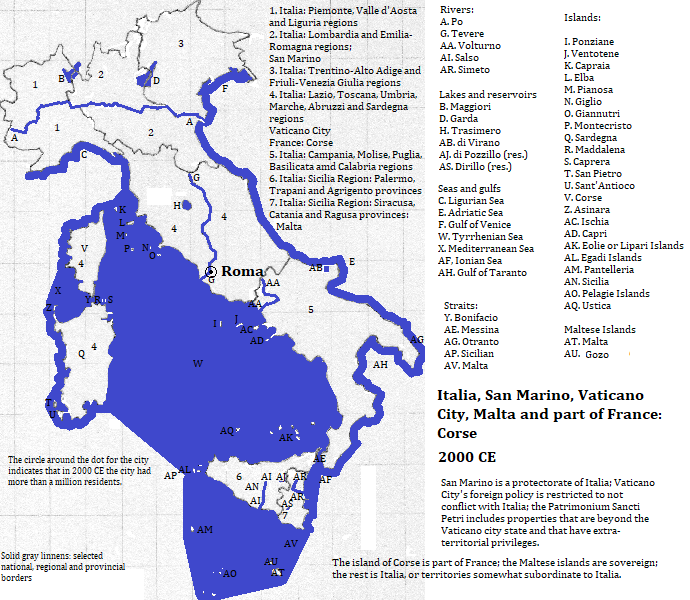
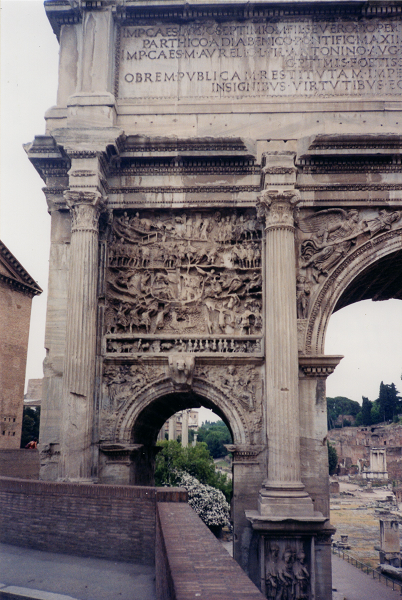
Arch of Septimius Severus, Roma, Lazio, Italia
1. Rome in English.
2. Italy in English.
3. Tiber in English.
4. Sicily in Engish.
5. Sardinia in English.
6. Corsica in English.
7. Carthage in English.
8. 2012 figure from world-gazetteer.com, accessed February 6, 2013.
9. https://en.wikipedia.org/wiki/List_of_cities_in_Italy, accessed February 15, 2017.
10. Emporis.com, accessed November 29, 2017. The 'Marina Militare,' a collection of wired communications masts, include some that are 492 feet tall and the Torre Laurentine, another telecommunications tower, is 571 feet high.
11. http://www.touropia.com/tourist-attractions-in-italy/3/, accessed February 16, 2017.
12. Vatican in English.
13. Formally the Monumento Nazionale a Vittorio Emanuele II, also called the Altare della Patria, and uncomplimentarily nicknamed the macchina da scrivere (typewriter).
14. 2015 figure from the side bar of https://en.wikipedia.org/wiki/Cerveteri, accessed February 16, 2017.
15. 2015 figure from the side bar of https://en.wikipedia.org/wiki/Tivoli,_Lazio, accessed February 16, 2017.
16. UNESCO, World Heritage Sites (Firefly Books, 2010).
17. https://en.wikipedia.org/wiki/List_of_the_busiest_airports_in_Italy, accessed February 16, 2017. My criterion for inclusion: above 3 million total passengers.
18. Side bar of https://en.wikipedia.org/wiki/Fiumicino, accessed February 16, 2017.
19. 2009 figure from the side bar of https://en.wikipedia.org/wiki/Ciampino, accessed February 16, 2017.
20. Tertius Chandler, Four Thousand Years of Urban Growth, 2nd ed. (The Edwin Mellen Press, 1987), "Tables of the World's Largest Cities." The city was the first largest city in the world in 100 CE, fourth in 361 CE, sixth in 200 BCE and eighth in 500 CE. It was the largest city in what is now Italia in those years and in 622 and 800. Figures for 1000, 1200, 1300, 1400 and 1500 come from Chandler's 'Cities of Europe' tables.
21. At the beginning of the year only.